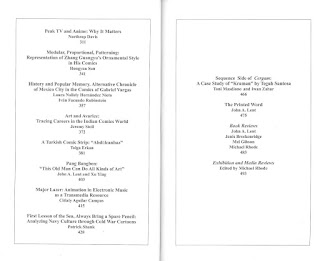by Mike Rhode
Superheroes. Washington, DC: National Museum of American History. November 20, 2018 to September 2, 2019. http://americanhistory.si.edu/exhibitions/super-heroes
Superheroes. Washington, DC: National Museum of American History. November 20, 2018 to September 2, 2019. http://americanhistory.si.edu/exhibitions/super-heroes
The Smithsonian museum has mounted a small, but choice, exhibit made up
of some extremely surprising pieces. The terse description on their
website only hints at it:
This showcase presents artifacts from the museum's collections that
relate to Superheroes, including comic books, original comic art, movie
and television costumes and props, and memorabilia. The display
includes George Reeves's Superman costume from the Adventures of Superman TV program, which ran from 1951-1958, as well as Halle Berry's Storm costume from the 2014 film X-Men: Days of Future Past.
 Of
the five exhibit cases, two concentrate on comic books and original
art, while the other three contain props from movies and pop culture
ephemera. Surprisingly, the Black Panther costume from the Marvel
movies which the museum collected this summer is not included, but as
noted above they have displayed George Reeve's Superman costume (since
it is in color rather than grey shades, it came from the later seasons
of the television show), Halle Berry's Storm uniform, along with
Captain America's shield, Wolverine's claws and Batman's cowl and a
batarang. Those three cases are rounded out with the first issue of Ms. Magazine which had a Wonder Woman cover, two lunchboxes (Wonder Woman and Marvel heroes), and a Superman telephone.
Of
the five exhibit cases, two concentrate on comic books and original
art, while the other three contain props from movies and pop culture
ephemera. Surprisingly, the Black Panther costume from the Marvel
movies which the museum collected this summer is not included, but as
noted above they have displayed George Reeve's Superman costume (since
it is in color rather than grey shades, it came from the later seasons
of the television show), Halle Berry's Storm uniform, along with
Captain America's shield, Wolverine's claws and Batman's cowl and a
batarang. Those three cases are rounded out with the first issue of Ms. Magazine which had a Wonder Woman cover, two lunchboxes (Wonder Woman and Marvel heroes), and a Superman telephone. |
| courtesy of Grand Comics Database |
The small exhibit lines two sides of a hallway off the busy
Constitution Avenue entrance of the Museum, but the location has the
advantage of being around the corner from a Batmobile from the 1989 Batman
movie that was installed earlier this year. The car may be tied into
the nearby installation and branding of a Warner Bros. theater showing
the latest Harry Potter spin-off movie which seems like a true waste of
space in the perennially over-crowded and under –exhibited (i.e. they
have literally hundreds of thousands of items worthy of display in
storage), but one assumes that besides the Batmobile, the theater came
with a cash donation or promise of shared revenues.
Notwithstanding that cynicism, the Batmobile and the superheroes
exhibit are fun to see, although most people quickly passed them by
during this reviewer's visit. Also of interest may be a bound volume of Wonder Woman
comics and a reproduction of an unused idea for her original costume,
around the other corner from the Batmobile in the Smithsonian Libraries
exhibit gallery. The museum has recently acquired some Marston family papers.
Bruce Guthrie has an extensive series of photographs including the individual comic books at http://www.bguthriephotos.com/graphlib.nsf/keys/2018_11_22D2_SIAH_Superheroes
(This review was written for the International Journal of Comic Art 20:2, but this version appears on both the IJOCA and ComicsDC websites on November 23, 2018, while the exhibit is still open for viewing.)
Bruce Guthrie has an extensive series of photographs including the individual comic books at http://www.bguthriephotos.com/graphlib.nsf/keys/2018_11_22D2_SIAH_Superheroes
(This review was written for the International Journal of Comic Art 20:2, but this version appears on both the IJOCA and ComicsDC websites on November 23, 2018, while the exhibit is still open for viewing.)






























